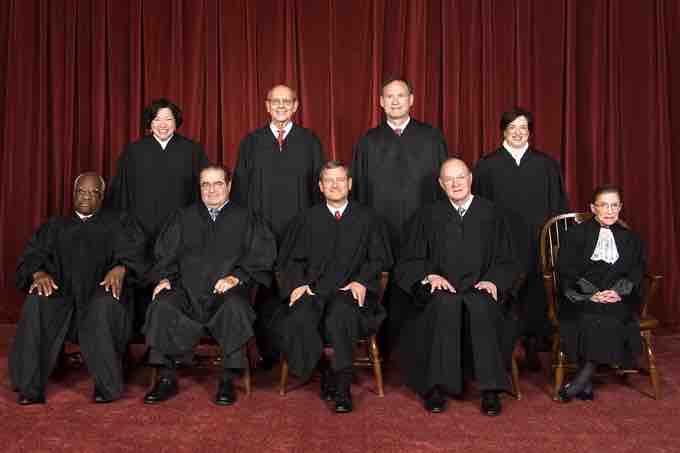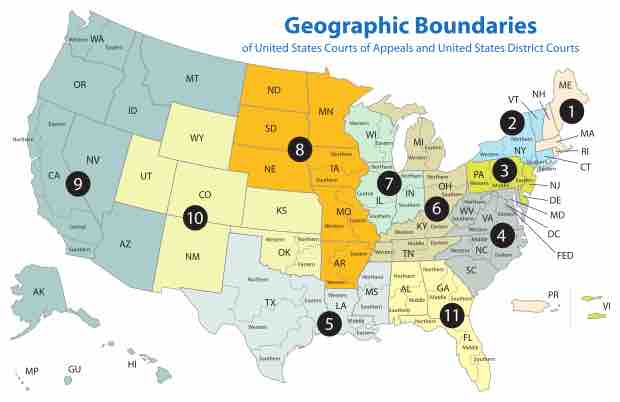Introduction
The judiciary is the system of courts that interprets and applies the law in the name of the state. Under the doctrine of the separation of powers, the judiciary generally does not make law or enforce law, but rather it interprets law and applies it to the facts of each case. The judiciary also provides a mechanism for the resolution of disputes. The judiciary branch is often tasked with ensuring equal justice under law. It consists of a court of final appeal in addition to lower courts.
Judiciary Branch of the United States
The United States federal courts make up the judiciary branch of federal government. These courts are organized under the United States Constitution and laws of the federal government. In the United States court system, the Supreme Court is the final authority on the interpretation of the federal Constitution as well as the constitutionality of the various state laws. In the US federal court system, federal cases are tried in trial courts, known as the US district courts, followed by appellate courts and then the Supreme Court. State courts, which try 98% of litigation, are subject to the jurisdiction of each state. The judicial system begins with a court of first instance, is appealed to an appellate court, and then ends at the court of last resort.
Supreme Court of the United States
The U.S. Supreme Court is the highest court in the United States. It has ultimate appellate jurisdiction over all federal courts and over state court cases involving issues of federal law. It also has original jurisdiction over a small range of cases . The Court consists of a chief justice and eight associate justices who are nominated by the President and confirmed by the United States Senate. Once appointed, justices have life tenure unless they resign, retire, or are removed after impeachment.

The U.S. Supreme Court
The United States Supreme Court, the highest court in the United States, in 2010. Top row (left to right): Associate Justice Sonia Sotomayor, Associate Justice Stephen G. Breyer, Associate Justice Samuel A. Alito, and Associate Justice Elena Kagan. Bottom row (left to right): Associate Justice Clarence Thomas, Associate Justice Antonin Scalia, Chief Justice John G. Roberts, Associate Justice Anthony Kennedy, and Associate Justice Ruth Bader Ginsburg.
Under the U.S. Constitution, the President of the United States appoints justices "by and with the advice and consent of the Senate. " Most presidents nominate candidates who broadly share their ideological views, although a justice's decisions may end up being contrary to a president's expectations. Because the Constitution sets no qualifications for service as a justice, a president may nominate anyone to serve, subject to Senate confirmation.
Before 1981, the approval process of justices was usually rapid. From the Truman through Nixon administrations, justices were typically approved within one month. From the Reagan administration through the present, the process has taken much longer. Some believe this is because Congress views justices as playing a more political role than in the past.
United States Court of Appeals
The United States courts of appeals are the intermediate appellate courts of the United States federal court system . A court of appeals decides appeals from the district courts within its federal judicial circuit, and in some instances from other designated federal courts and administrative agencies. The United States Courts of Appeals are considered among the most powerful and influential courts in the United States. Because of their ability to set legal precedent in regions that cover millions of people, the United States Courts of Appeals have strong policy influence on U.S. law.

U.S Court of Appeals and District Courts map
Map of the geographic boundaries of the various United States Courts of Appeals and United States District Courts.
There currently are thirteen United States courts of appeals. The eleven "numbered" circuits and the D.C. Circuit are geographically defined. The thirteenth court of appeals is the United States Court of Appeals for the Federal Circuit, which has nationwide jurisdiction over certain appeals based on their subject matter. Currently, there are 179 judges on the United States Courts of Appeals authorized by Congress and Article III of the U.S. Constitution. These judges are nominated by the President of the United States, and if confirmed by the United States Senate, have lifetime tenure. They earn an annual salary of $184,500.
United States District Courts
The United States district courts are the general trial courts of the United States federal court system. Both civil and criminal cases are filed in the district court, which is a court of law, equity, and admiralty. There is a United States bankruptcy court associated with each United States district court. Each federal judicial district has at least one courthouse, and many districts have more than one. In contrast to the Supreme Court, which was established by Article III of the Constitution, the district courts were established by Congress. There is at least one judicial district for each state, the District of Columbia, and Puerto Rico. There are eighty-nine districts in the fifty states, with a total of ninety-four districts including territories.